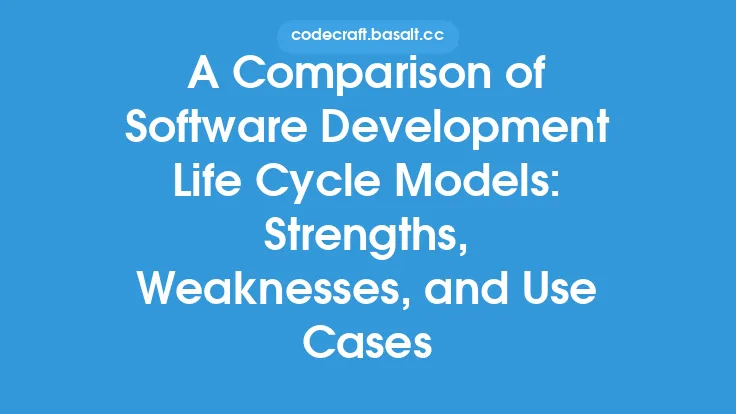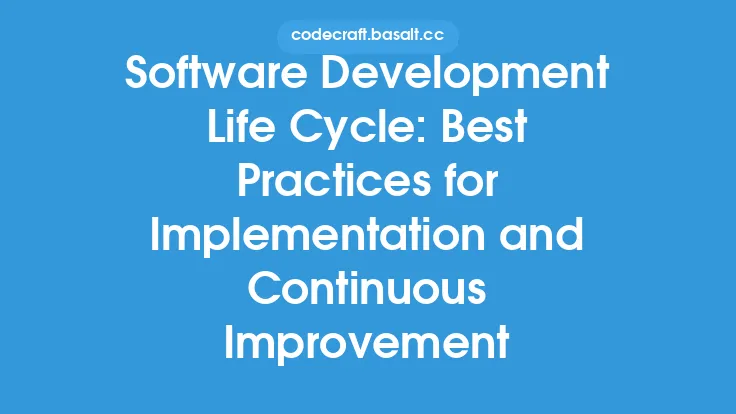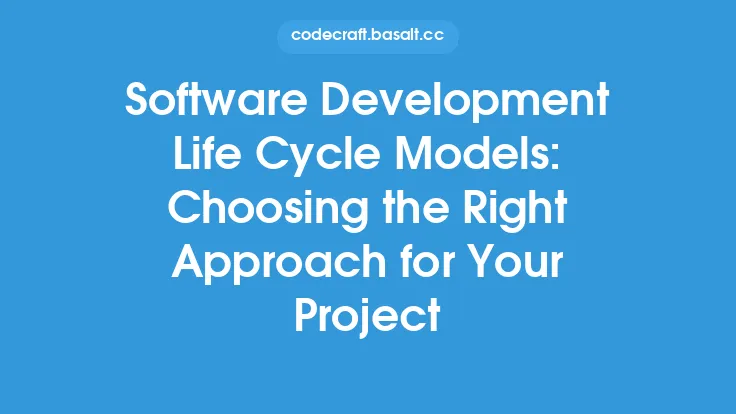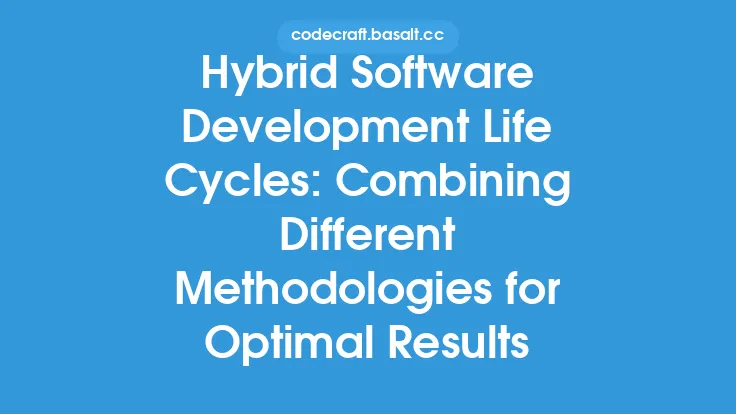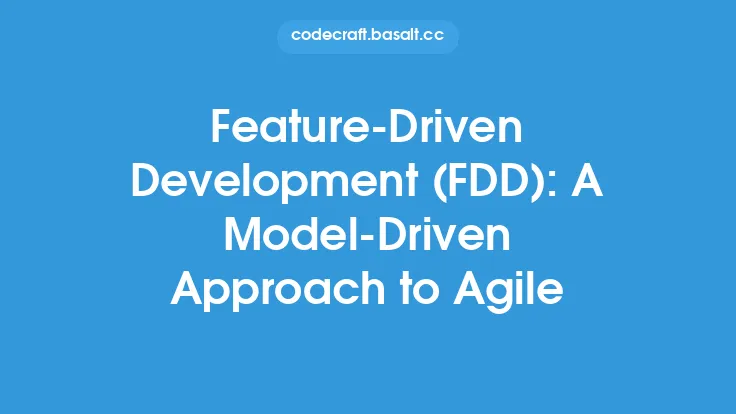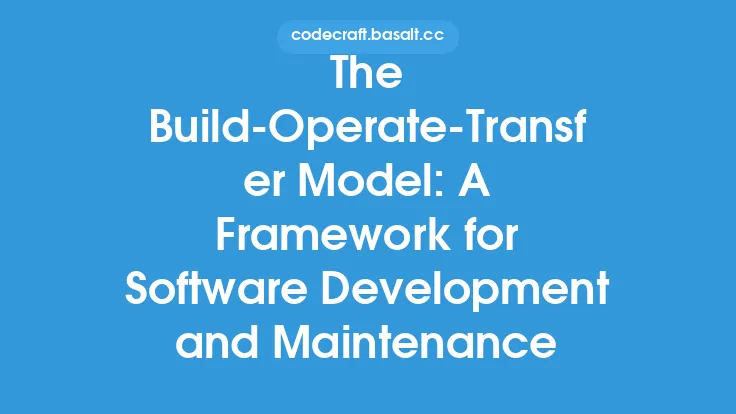The V-Model is a software development life cycle (SDLC) that emphasizes verification and validation activities throughout the development process. It is a sequential approach that follows a V-shaped pattern, with the left side of the V representing the decomposition of requirements into smaller components, and the right side representing the integration of these components into a complete system. This approach ensures that each phase of the development process is thoroughly tested and validated before moving on to the next phase.
Introduction to the V-Model
The V-Model was first introduced in the 1980s as a response to the traditional waterfall model, which was criticized for its lack of flexibility and inability to handle changing requirements. The V-Model was designed to address these limitations by incorporating verification and validation activities at each stage of the development process. This approach ensures that errors and defects are detected and corrected early on, reducing the risk of downstream problems and improving the overall quality of the software.
Phases of the V-Model
The V-Model consists of several phases, each with its own set of activities and deliverables. The phases are:
- Requirements analysis: This phase involves gathering and analyzing the requirements of the system, including functional and non-functional requirements.
- System design: In this phase, the system is designed, and the architecture is defined.
- Component design: The system is broken down into smaller components, and each component is designed and specified.
- Implementation: The components are implemented, and the code is written.
- Unit testing: Each component is tested individually to ensure that it meets the specified requirements.
- Integration testing: The components are integrated, and the system is tested as a whole.
- System testing: The complete system is tested to ensure that it meets the specified requirements.
- Acceptance testing: The system is tested by the end-users to ensure that it meets their requirements and expectations.
Verification and Validation Activities
Verification and validation activities are an essential part of the V-Model. Verification involves checking that the software meets the specified requirements, while validation involves checking that the software meets the user's needs and expectations. These activities are performed at each stage of the development process, from requirements analysis to acceptance testing. The goal of these activities is to ensure that the software is correct, complete, and consistent with the specified requirements.
Benefits of the V-Model
The V-Model offers several benefits, including:
- Improved quality: The V-Model ensures that the software is thoroughly tested and validated at each stage of the development process, reducing the risk of errors and defects.
- Reduced risk: The V-Model identifies and mitigates risks early on, reducing the likelihood of downstream problems.
- Increased reliability: The V-Model ensures that the software is reliable and meets the specified requirements.
- Better communication: The V-Model promotes communication between stakeholders, including developers, testers, and end-users.
Challenges and Limitations of the V-Model
While the V-Model offers several benefits, it also has some challenges and limitations. These include:
- Rigidity: The V-Model is a sequential approach that can be inflexible and resistant to change.
- High upfront costs: The V-Model requires significant upfront investment in planning, design, and testing.
- Limited flexibility: The V-Model can be difficult to adapt to changing requirements or new technologies.
- Overemphasis on testing: The V-Model can lead to an overemphasis on testing, which can divert resources away from other important activities, such as development and maintenance.
Real-World Applications of the V-Model
The V-Model has been widely used in various industries, including:
- Aerospace: The V-Model is used in the development of safety-critical systems, such as aircraft and spacecraft.
- Automotive: The V-Model is used in the development of automotive systems, including engine control units and safety systems.
- Healthcare: The V-Model is used in the development of medical devices and healthcare software.
- Finance: The V-Model is used in the development of financial systems, including banking and trading systems.
Best Practices for Implementing the V-Model
To implement the V-Model successfully, several best practices should be followed:
- Define clear requirements: Clearly define the requirements of the system, including functional and non-functional requirements.
- Establish a robust testing strategy: Develop a comprehensive testing strategy that includes verification and validation activities at each stage of the development process.
- Use iterative and incremental development: Use iterative and incremental development to break down the development process into smaller, manageable chunks.
- Foster communication and collaboration: Foster communication and collaboration between stakeholders, including developers, testers, and end-users.
- Continuously monitor and evaluate: Continuously monitor and evaluate the development process, identifying areas for improvement and implementing changes as needed.
Conclusion
The V-Model is a software development life cycle that emphasizes verification and validation activities throughout the development process. It offers several benefits, including improved quality, reduced risk, and increased reliability. However, it also has some challenges and limitations, including rigidity, high upfront costs, and limited flexibility. By following best practices and using the V-Model in conjunction with other methodologies, developers can create high-quality software that meets the needs and expectations of end-users.
